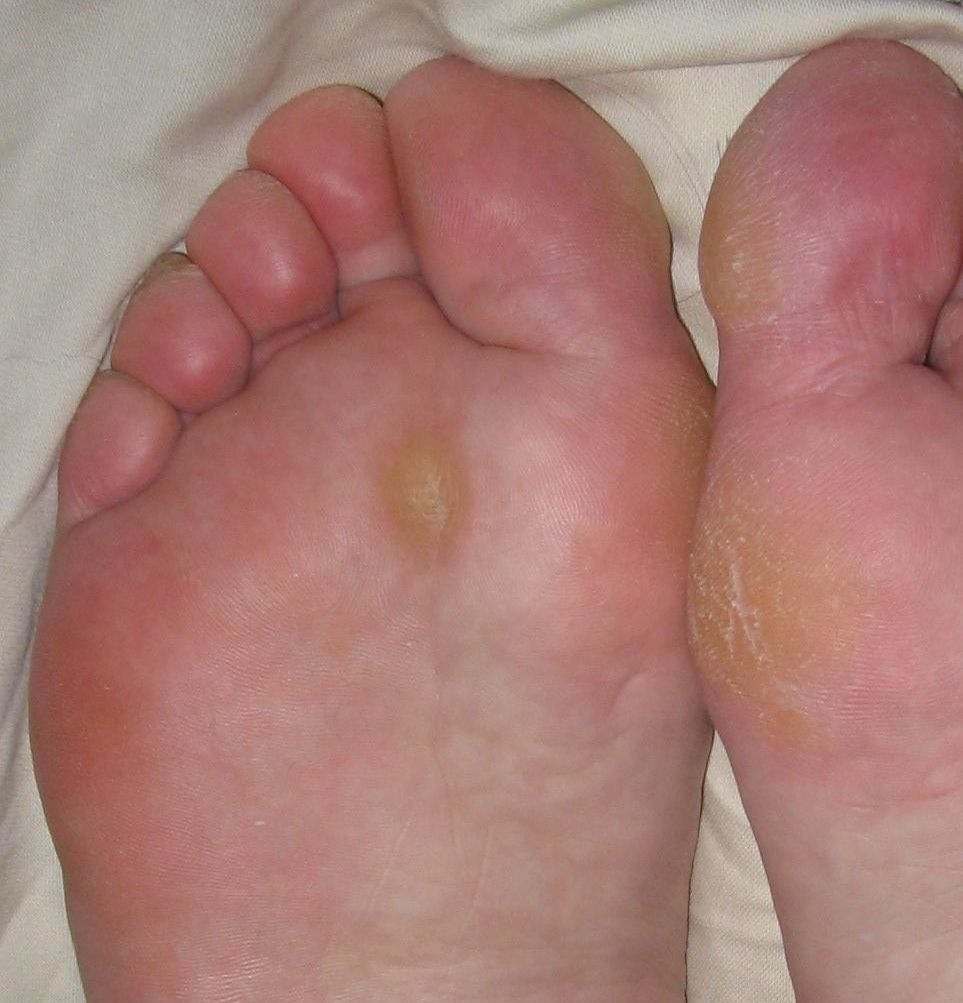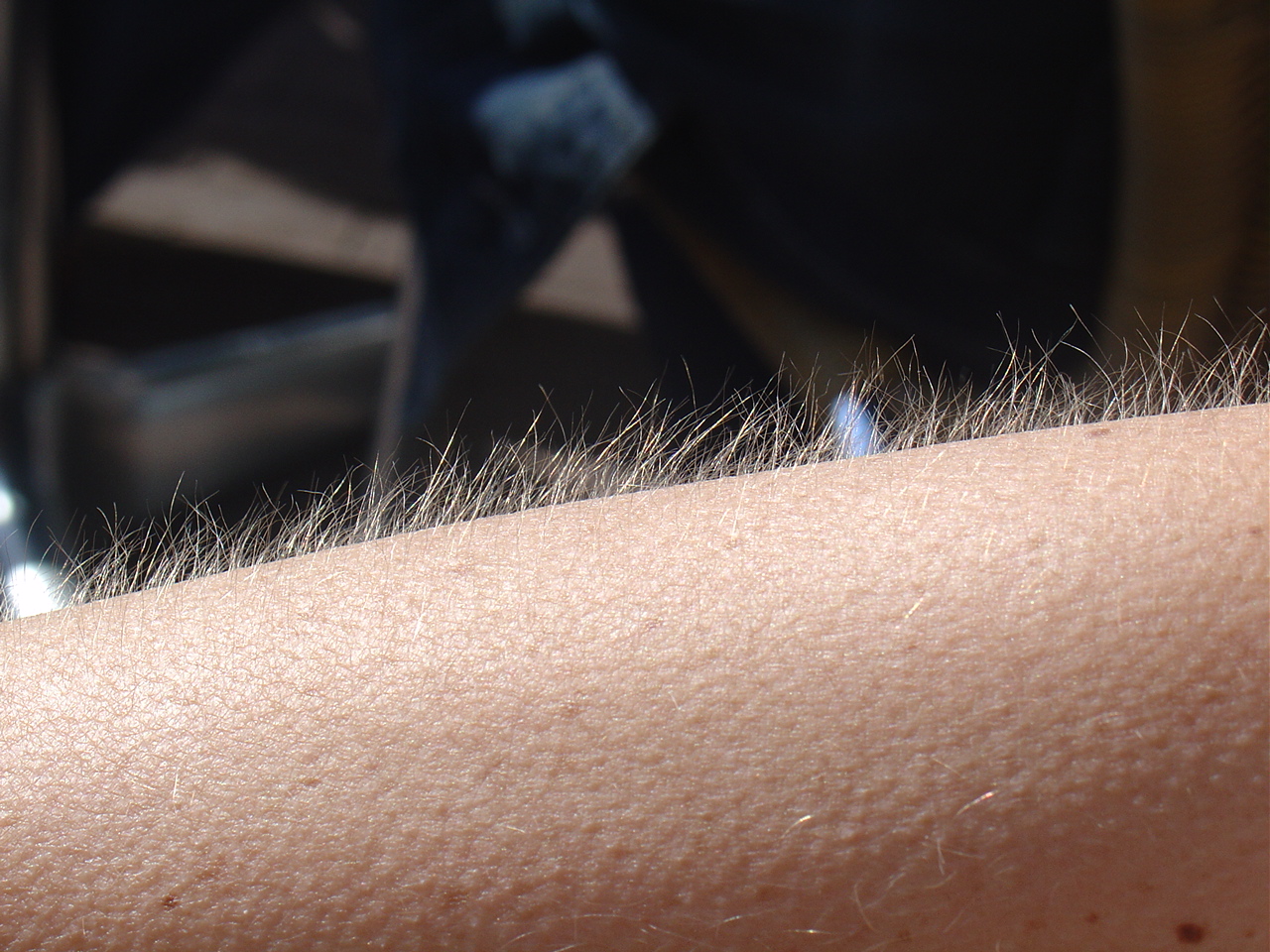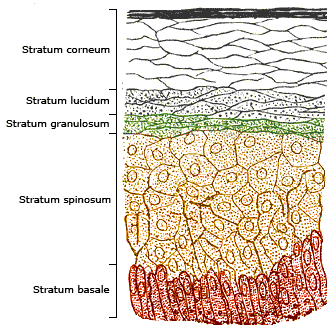|
Blister
A blister is a small pocket of body fluid (lymph, serum, plasma, blood, or pus) within the upper layers of the skin, usually caused by forceful rubbing (friction), burning, freezing, chemical exposure or infection. Most blisters are filled with a clear fluid, either serum or plasma. However, blisters can be filled with blood (known as "blood blisters") or with pus (for instance, if they become infected). Smaller blisters are called ''blebs''. The word "blister" entered English in the 14th century. It came from the Middle Dutch and was a modification of the Old French , which meant a leprous nodule—a rise in the skin due to leprosy. In dermatology, the words cutaneous condition#Vesicle, ''vesicle'' and ''bulla'' refer to blisters of smaller or greater size, respectively. Some sources recommend not to pop a blister. If popped, bacteria can enter. Excess skin should not necessarily be removed as the top layer protects the soft tissue underneath. However, some sources a ... [...More Info...] [...Related Items...] OR: [Wikipedia] [Google] [Baidu] |
Blood Blister
A blood blister is a type of blister that forms when subdermal tissue (biology), tissues and blood vessels are damaged without piercing the skin. It consists of a pool of lymph, blood and other body fluids trapped beneath the skin. If punctured, it suppurates a dark fluid. Sometimes the fluids are cut off from the rest of the body and dry up, leaving behind dead cell material inside the blister with a texture like putty. Some blood blisters can be extremely painful due to bruising where the blister occurred. There are also blood blister-like aneurysms. These are sometimes located in the supraclinoid internal carotid artery, and have been recognized as having unique pathological and clinical features. Causes Blood blisters are commonly caused by accidents in which the skin is pinched by a tool, mechanism, or heavy weight without protective equipment. Blood blisters can also arise from forcible human contact, including grappling. Blood blisters also may occur with friction c ... [...More Info...] [...Related Items...] OR: [Wikipedia] [Google] [Baidu] |
Cutaneous Condition
A skin condition, also known as cutaneous condition, is any medical condition that affects the integumentary system—the organ system that encloses the body and includes skin, nails, and related muscle and glands. The major function of this system is as a barrier against the external environment. Conditions of the human integumentary system constitute a broad spectrum of diseases, also known as dermatoses, as well as many nonpathologic states (like, in certain circumstances, melanonychia and racquet nails). While only a small number of skin diseases account for most visits to the physician, thousands of skin conditions have been described. Classification of these conditions often presents many nosological challenges, since underlying causes and pathogenetics are often not known. Therefore, most current textbooks present a classification based on location (for example, conditions of the mucous membrane), morphology ( chronic blistering conditions), cause ( skin conditions res ... [...More Info...] [...Related Items...] OR: [Wikipedia] [Google] [Baidu] |
Bleb (medicine)
In medicine, a bleb is a blister-like protrusion (often hemispherical) or '' vesicle'' filled with serous fluid. Blebs can form in a number of tissues by different pathologies, including frostbite and can "appear and disappear within a short time interval". In pathology, pulmonary blebs are small subpleural thin-walled air-containing spaces, not larger than 1-2 cm in diameter, found by the upper lobe of the lung, between the lung and the visceral pleura. Their walls are thin, being less than 1 mm thick. If they rupture, they allow air to escape into pleural space, resulting in a spontaneous pneumothorax and possibly a collapsed lung. Blebs can grow larger or join together to create a larger cyst, or bulla. There are usually no symptoms unless a pneumothorax occurs or the bulla grows very large. Blebs are usually associated with emphysema. In ophthalmology, blebs may be formed intentionally in the treatment of glaucoma. In such treatments, functional blebs facilitate the circulati ... [...More Info...] [...Related Items...] OR: [Wikipedia] [Google] [Baidu] |
Calluses
A callus (: calluses) is an area of thickened and sometimes hardened skin that forms as a response to repeated friction, pressure, or other irritation. Since repeated contact is required, calluses are most often found on the feet and hands, but they may occur anywhere on the skin. Some degree of callus, such as on the bottom of the foot, is normal. Calluses are generally not harmful and help prevent blisters, as well as offering protection. However, excessive formation may sometimes lead to other problems, such as a Ulcer (dermatology), skin ulceration or infection, or cause the affected person to try to offload the affected painful area, which can place excessive stress on the asymptomatic side. Rubbing that is too frequent or forceful will cause blisters, as opposed to calluses, to form. Cause Normally, a callus will form on any part of the skin exposed to excess friction over a long period of time. Activities that are known for causing calluses include list of constructio ... [...More Info...] [...Related Items...] OR: [Wikipedia] [Google] [Baidu] |
Dermatology
Dermatology is the branch of medicine dealing with the Human skin, skin.''Random House Webster's Unabridged Dictionary.'' Random House, Inc. 2001. Page 537. . It is a speciality with both medical and surgical aspects. A List of dermatologists, dermatologist is a specialist medical doctor who manages diseases related to skin. Etymology Attested in English in 1819, the word "dermatology" derives from the Ancient Greek, Greek δέρματος (''dermatos''), genitive of δέρμα (''derma''), "skin" (itself from δέρω ''dero'', "to flay") and -λογία ''wikt:-logia, -logia''. Neo-Latin ''dermatologia'' was coined in 1630, an anatomical term with various French and German uses attested from the 1730s. History In 1708, the first great school of dermatology became a reality at the famous Hôpital Saint-Louis in Paris, and the first textbooks (Willan's, 1798–1808) and atlases (Jean-Louis-Marc Alibert, Alibert's, 1806–1816) appeared in print around the same time.Freedber ... [...More Info...] [...Related Items...] OR: [Wikipedia] [Google] [Baidu] |
Leprosy
Leprosy, also known as Hansen's disease (HD), is a Chronic condition, long-term infection by the bacteria ''Mycobacterium leprae'' or ''Mycobacterium lepromatosis''. Infection can lead to damage of the Peripheral nervous system, nerves, respiratory tract, skin, and eyes. This nerve damage may result in a lack of ability to feel pain, which can lead to the loss of parts of a person's Appendicular skeleton, extremities from repeated injuries or infection through unnoticed wounds. An infected person may also experience muscle weakness and poor eyesight. Leprosy symptoms may begin within one year, but for some people symptoms may take 20 years or more to occur. Leprosy is spread between people, although extensive contact is necessary. Leprosy has a low pathogenicity, and 95% of people who contract or who are exposed to ''M. leprae'' do not develop the disease. Spread is likely through a cough or contact with fluid from the nose of a person infected by leprosy. Genetic factors and i ... [...More Info...] [...Related Items...] OR: [Wikipedia] [Google] [Baidu] |
Dermatology
Dermatology is the branch of medicine dealing with the Human skin, skin.''Random House Webster's Unabridged Dictionary.'' Random House, Inc. 2001. Page 537. . It is a speciality with both medical and surgical aspects. A List of dermatologists, dermatologist is a specialist medical doctor who manages diseases related to skin. Etymology Attested in English in 1819, the word "dermatology" derives from the Ancient Greek, Greek δέρματος (''dermatos''), genitive of δέρμα (''derma''), "skin" (itself from δέρω ''dero'', "to flay") and -λογία ''wikt:-logia, -logia''. Neo-Latin ''dermatologia'' was coined in 1630, an anatomical term with various French and German uses attested from the 1730s. History In 1708, the first great school of dermatology became a reality at the famous Hôpital Saint-Louis in Paris, and the first textbooks (Willan's, 1798–1808) and atlases (Jean-Louis-Marc Alibert, Alibert's, 1806–1816) appeared in print around the same time.Freedber ... [...More Info...] [...Related Items...] OR: [Wikipedia] [Google] [Baidu] |
Cold
Cold is the presence of low temperature, especially in the atmosphere. In common usage, cold is often a subjectivity, subjective perception. A lower bound to temperature is absolute zero, defined as 0.00K on the Kelvin scale, an absolute thermodynamic temperature scale. This corresponds to on the Celsius scale, on the Fahrenheit scale, and on the Rankine scale. Since temperature relates to the thermal energy held by an object or a sample of matter, which is the kinetic energy of the random motion of the particle constituents of matter, an object will have less thermal energy when it is colder and more when it is hotter. If it were possible to cool a system to absolute zero, all motion of the particles in a sample of matter would cease and they would be at complete rest in the classical physics, classical sense. The object could be described as having zero thermal energy. Microscopically in the description of quantum mechanics, however, matter still has zero-point energy ... [...More Info...] [...Related Items...] OR: [Wikipedia] [Google] [Baidu] |
Ulcer (dermatology)
An ulcer is a sore on the skin or a mucous membrane, accompanied by the disintegration of tissue. Ulcers can result in complete loss of the Epidermis (skin), epidermis and often portions of the dermis and even subcutaneous fat. Ulcers are most common on the skin of the lower extremities and in the gastrointestinal tract. An ulcer that appears on the skin is often visible as an inflamed tissue with an area of reddened skin. A skin ulcer is often visible in the event of exposure to heat or cold, irritation, or a problem with blood circulation. They can also be caused due to a lack of mobility, which causes prolonged pressure on the tissues. This stress in the blood circulation is transformed to a skin ulcer, commonly known as Decubitus ulcer, bedsores or decubitus ulcers. Ulcers often become infection, infected, and pus forms. Signs and symptoms Skin ulcers appear as open craters, often round, with layers of skin that have eroded. The skin around the ulcer may be red, swollen, and ... [...More Info...] [...Related Items...] OR: [Wikipedia] [Google] [Baidu] |
Epidermis (skin)
The epidermis is the outermost of the three layers that comprise the skin, the inner layers being the dermis and hypodermis. The epidermal layer provides a barrier to infection from environmental pathogens and regulates the amount of water released from the body into the atmosphere through transepidermal water loss. The epidermis is composed of multiple layers of flattened cells that overlie a base layer ( stratum basale) composed of columnar cells arranged perpendicularly. The layers of cells develop from stem cells in the basal layer. The thickness of the epidermis varies from 31.2μm for the penis to 596.6μm for the sole of the foot with most being roughly 90μm. Thickness does not vary between the sexes but becomes thinner with age. The human epidermis is an example of epithelium, particularly a stratified squamous epithelium. The word epidermis is derived through Latin , itself and . Something related to or part of the epidermis is termed epidermal. Structure ... [...More Info...] [...Related Items...] OR: [Wikipedia] [Google] [Baidu] |
Dermis
The dermis or corium is a layer of skin between the epidermis (skin), epidermis (with which it makes up the cutis (anatomy), cutis) and subcutaneous tissues, that primarily consists of dense irregular connective tissue and cushions the body from stress and strain. It is divided into two layers, the superficial area adjacent to the epidermis called the papillary region and a deep thicker area known as the reticular dermis.James, William; Berger, Timothy; Elston, Dirk (2005). ''Andrews' Diseases of the Skin: Clinical Dermatology'' (10th ed.). Saunders. Pages 1, 11–12. . The dermis is tightly connected to the epidermis through a basement membrane. Structural components of the dermis are collagen, elastic fibers, and Ground substance, extrafibrillar matrix.Marks, James G; Miller, Jeffery (2006). ''Lookingbill and Marks' Principles of Dermatology'' (4th ed.). Elsevier Inc. Page 8–9. . It also contains mechanoreceptors that provide the sense of touch and thermoreceptors that provide ... [...More Info...] [...Related Items...] OR: [Wikipedia] [Google] [Baidu] |







